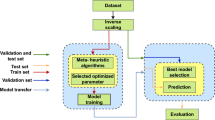Abstract
With better understanding of earthquake physics and the advent of broadband seismology and GPS, seismologists can forecast the future activity of large earthquakes on a sound scientific basis. Such forecasts are critically important for long-term hazard mitigation, but because stochastic fracture processes are complex, the forecasts are inevitably subject to large uncertainties, and unexpected events will inevitably occur. Recent developments in real-time seismology helps seismologists cope with and prepare for such unexpected events, including tsunamis and earthquakes. For a tsunami warning, the required warning time is fairly long (usually 5 min or longer) and enables use of a rigorous method for this purpose. Significant advances have already been made. In contrast, early warning of earthquakes is far more challenging because the required warning time is very short (as short as three seconds). Despite this difficulty the methods used for regional warnings have advanced substantially, and several systems have been already developed and implemented. A future strategy for more challenging, rapid (a few second) warnings, which are critically important for saving properties and lives, is discussed.





Similar content being viewed by others
References
Allen, R. M., P. Gasparini, O. Kamigaichi, and M. Böse (2009), The Status of Earthquake Early Warning around the World: An Introductory Overview, Seismological Research Letters, 80(5), 682–693, doi:10.1785/gssrl.80.5.682.
Böse, M., R. A., H. Brown, G. Cua, M. Fischer, E. Hauksson, T. Heaton, M. Hellweg, M. Liukis, D. Neuhauser, P. Maechling, CISN EEW Group (2014), CISN ShakeAlert—An Earthquake Early Warning Demonstration System for California in Early Warning for Geological Disasters, Advanced Technologies in Earth Sciences edited by F. Wenze and J. Zschau, pp 49–69, Sringer, Berlin.
Crowell, B. W., Y. Bock, and D. Melgar (2012), Real-time inversion of GPS data for finite fault modeling and rapid hazard assessment, Geophysical Research Letters, 39(9), L09305, doi:10.1029/2012gl051318.
Feng, L., A. V. Newman, M. Protti, V. González, Y. Jiang, and T. H. Dixon (2012), Active deformation near the Nicoya Peninsula, northwestern Costa Rica, between 1996 and 2010: Interseismic megathrust coupling, J. Geophys. Res., 117(B6), B06407, doi:10.1029/2012jb009230.
Gusman, A., and Y. Tanioka (2014), W Phase Inversion and Tsunami Inundation Modeling for Tsunami Early Warning: Case Study for the 2011 Tohoku Event, Pure Appl. Geophys., 171(7), 1409–1422, doi:10.1007/s00024-013-0680-z.
Hayes, G. P., P. S. Earle, H. M. Benz, D. J. Wald, R. W. Briggs, and t. U. N. E. R. Team (2011), 88 Hours: The US Geological Survey National Earthquake Information Center Response to the 11 March 2011 Mw 9.0 Tohoku Earthquake, Seismological Research Letters, 82(4), 481–493, doi:10.1785/gssrl.82.4.481.
Kamigaichi, O., M. Saito, K. Doi, T. Matsumori, S. y. Tsukada, K. Takeda, T. Shimoyama, K. Nakamura, M. Kiyomoto, and Y. Watanabe (2009), Earthquake Early Warning in Japan: Warning the General Public and Future Prospects, Seismological Research Letters, 80(5), 717–726, doi:10.1785/gssrl.80.5.717.
Ohta, Y., et al. (2012), Quasi real-time fault model estimation for near-field tsunami forecasting based on RTK-GPS analysis: Application to the 2011 Tohoku-Oki earthquake (Mw 9.0), Journal of Geophysical Research: Solid Earth, 117(B2), B02311, doi:10.1029/2011jb008750.
Pérez-Campos, X., D. Melgar, S. K. Singh, V. Cruz-Atienza, A. Iglesias, and V. Hjörleifsdóttir (2013), Rapid Estimation of Fault Parameters for Tsunami Warning along the Mexican Subduction Zone: A Scenario Earthquake in the Guerrero Seismic Gap, Seismological Research Letters, 84(3), 474–484, doi:10.1785/0220120156.
Ruegg, J. C., A. Rudloff, C. Vigny, R. Madariaga, J. B. de Chabalier, J. Campos, E. Kausel, S. Barrientos, and D. Dimitrov (2009), Interseismic strain accumulation measured by GPS in the seismic gap between Constitución and Concepción in Chile, Physics of the Earth and Planetary Interiors, 175(1–2), 78–85, doi:http://dx.doi.org/10.1016/j.pepi.2008.02.015.
Singh, S. K., X. Pérez-Campos, A. Iglesias, and D. Melgar (2012), A Method for Rapid Estimation of Moment Magnitude for Early Tsunami Warning Based on Coastal GPS Networks, Seismological Research Letters, 83(3), 516–530, doi:10.1785/gssrl.83.3.516.
Tsushima, H., K. Hirata, Y. Hayashi, Y. Tanioka, K. Kimura, S. Sakai, M. Shinohara, T. Kanazawa, R. Hino, and K. Maeda (2011), Near-field tsunami forecasting using offshore tsunami data from the 2011 off the Pacific coast of Tohoku Earthquake, Earth Planets Space, 63, 821–826.
Wright, T. J., N. Houlié, M. Hildyard, and T. Iwabuchi (2012), Real-time, reliable magnitudes for large earthquakes from 1 Hz GPS precise point positioning: The 2011 Tohoku-Oki (Japan) earthquake, Geophysical Research Letters, 39(12), L12302, doi:10.1029/2012gl051894.
Wu, Y. M., D. Y. Chen, T. L. Lin, C. Y. Hsieh, T. L. Chin, W. Y. Chang, W. S. Li, and S. H. Ker (2013), A High-Density Seismic Network for Earthquake Early Warning in Taiwan Based on Low Cost Sensors, Seismological Research Letters, 84(6), 1048–1054, doi:10.1785/0220130085.
Wu, Y.-M., and H. Kanamori (2005), Experiment on an Onsite Early Warning Method for the Taiwan Early Warning System, Bulletin of the Seismological Society of America, 95(1), 347–353, doi:10.1785/0120040097.
Acknowledgments
The strong-motion data used in this paper were obtained from the KiK-net and K-NET Data Center of the National Research Institute for Earth Science and Disaster Prevention in Japan (NIED).
Author information
Authors and Affiliations
Corresponding author
Rights and permissions
About this article
Cite this article
Kanamori, H. Earthquake Hazard Mitigation and Real-Time Warnings of Tsunamis and Earthquakes. Pure Appl. Geophys. 172, 2335–2341 (2015). https://doi.org/10.1007/s00024-014-0964-y
Received:
Accepted:
Published:
Issue Date:
DOI: https://doi.org/10.1007/s00024-014-0964-y




